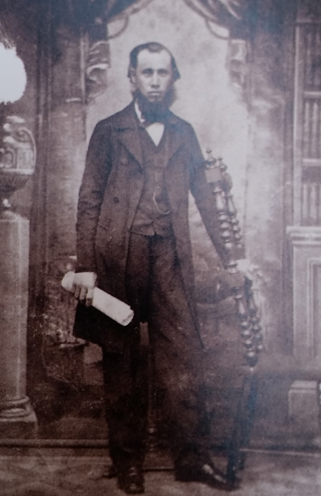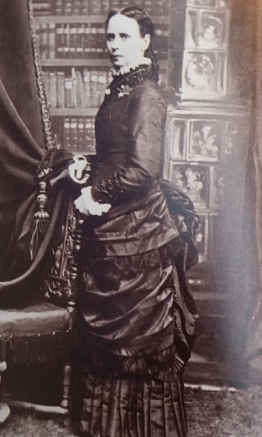Collingwood Notables Database
Alfred Barrett Biggs
1825-1900
Teacher, inventor, astronomer
Alfred Biggs was appointed as the first head teacher at the United Methodist Free Church School in Hoddle Street Collingwood when it opened in 1858. He was assisted by his wife Harriet Biggs. The little school, funded under the auspices of the Denominational Board, consisted of a brick schoolroom measuring 38 feet by 24 feet, and a smaller timber building. It was on the southwest corner of Perry Street, and the young couple rented the conveniently nearby Clarendon Villa in Harmsworth Street. Their work would have been demanding. Most of the children would not have attended school prior to their arrival, and children of different ages would have contributed to the din in the small rooms. Moreover, Harriet, in charge of the Infants room, was also managing regular births and the sorrow of infant deaths; she had already had two children before starting at the school, the firstborn dying at the age of three months, and three more were born during her tenure, the last dying in April 1863. A month’s leave for childbirth was the norm, and Harriet’s health suffered.
Biggs would have been regarded as a good man for the post, as he was not only an experienced teacher but a strong adherent of Methodism, following in his father’s footsteps. He was born in London, and migrated to Van Diemen’s Land as a small boy, arriving with his parents in 1833. He had worked as a teacher and in banking before moving to Melbourne in 1852.
At the United Methodist Free Church Alfred was supervisor of the Sunday School as well as playing the organ and conducting the choir. Harriet, born in Surrey, was also brought up a Methodist and remained deeply religious all her life. Biggs was also a practical man with a good deal of mechanical aptitude, and became a keen amateur astronomer. He joined the Royal Microscopic Society of Victoria and at one meeting he exhibited his own high-powered microscope for which he had ground the lenses and turned the brasswork himself.
The Biggses remained at the school until 1864 when they returned to Tasmania, as VDL was by then officially called. In Tasmania Biggs continued teaching and later returned to banking, but his real claim to fame came from his scientific activities. He gained a substantial reputation as a pioneering inventor and instrument maker, is believed to have established the first telephone connection in Australia, and was elected a fellow of the Royal Society of Tasmania.
In the crowded primary curriculum, mainly concentrating on the three Rs, would Biggs have had time to give the noisy urchins of the Hoddle Street school some inkling of the wonders of applied science that so fascinated him? It is unlikely that we will ever know.
Life Summary
| Birth Date | Birth Place |
|---|---|
| 10 April 1825 | London |
| Spouse Name | Date of Marriage | Children |
|---|---|---|
| Harriet Burville | 22 February 1855 | Eight children born 1856 to 1875; five daughters and one son survived him |
| Home Street | Home City | Status of Building |
|---|---|---|
| Hoddle Street | Not identified | |
| Harmsworth Street | Collingwood | Demolishîed |
| Work Street | Work City | Status of Building |
|---|---|---|
| Hoddle Street, sw corner Perry Street | Collingwood | Demolished |
| Church | Lodge |
|---|---|
| Methodist Free Church Collingwood |
| Death Date | Death Place | Cemetery |
|---|---|---|
| 19 December 1900 | Launceston | Launceston |
ADB Alfred Biggs.
Cummings, Bitter roots, sweet fruit; Biggs, Tasmania over five generations: return to Van Diemen's Land?; Giordano, Watcher of the skies: the story of Alfred Barrett Biggs; Orchiston, The contribution of Alfred Barrett Biggs to Australian and Tasmanian astronomy.
Photographs courtesy Archives Office of Tasmania.


